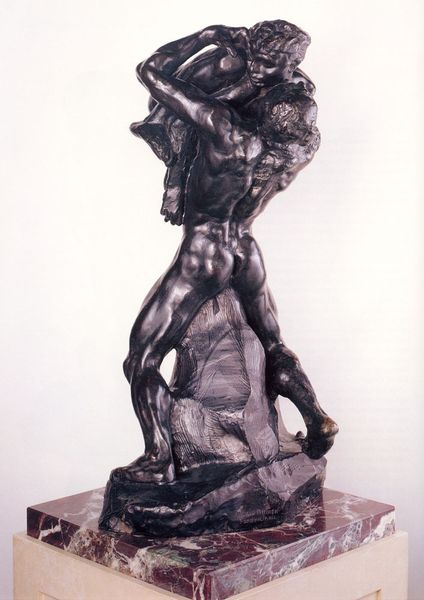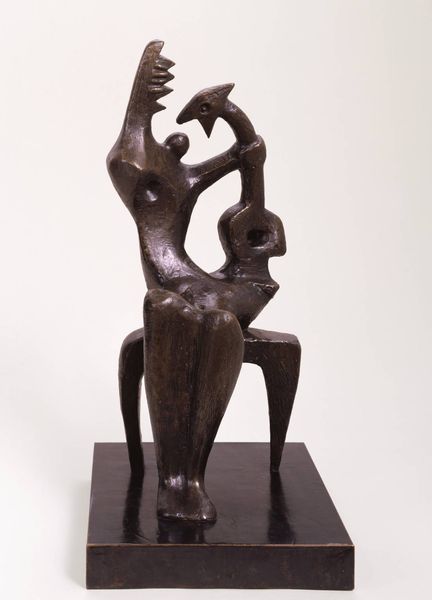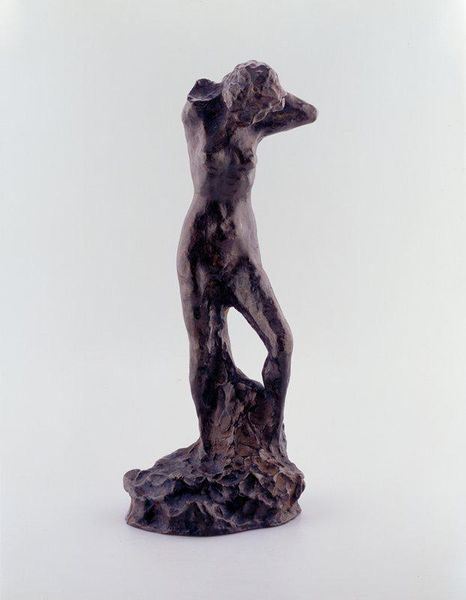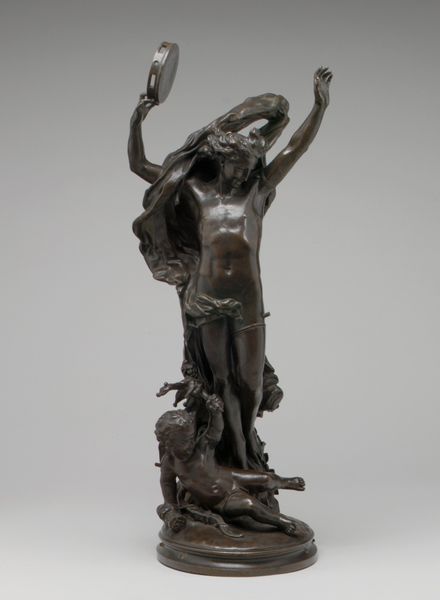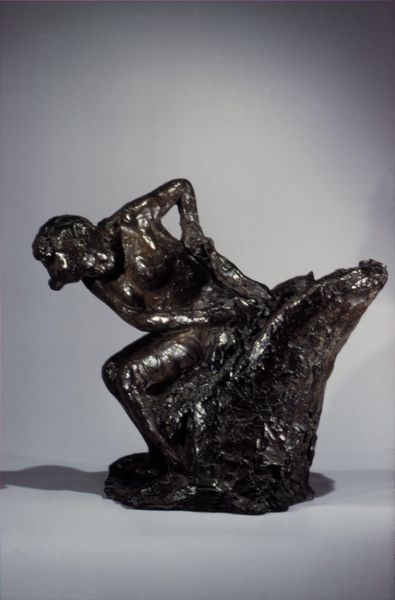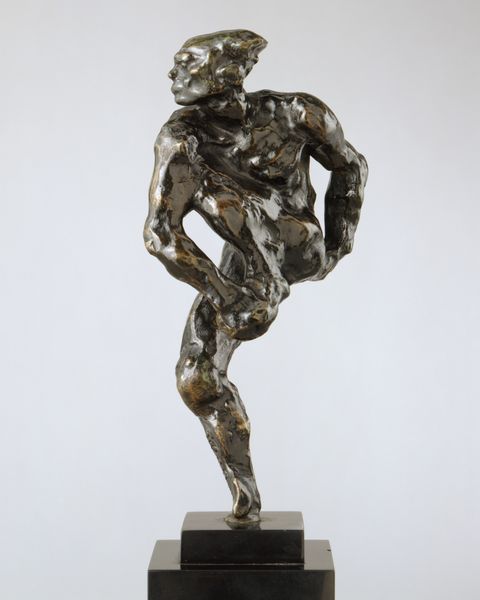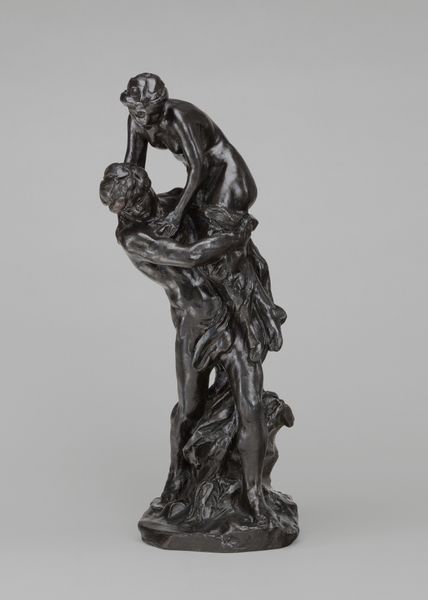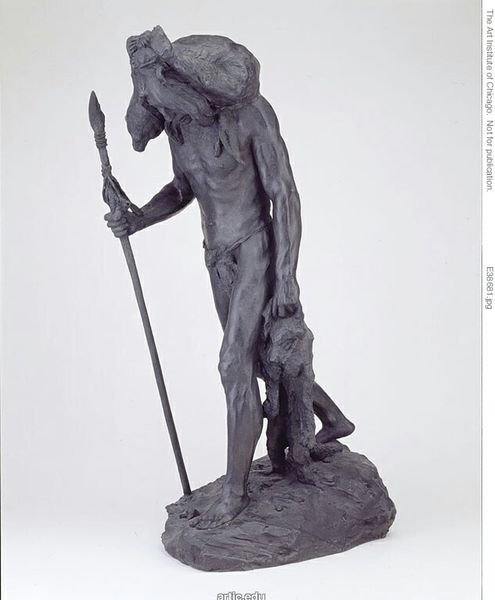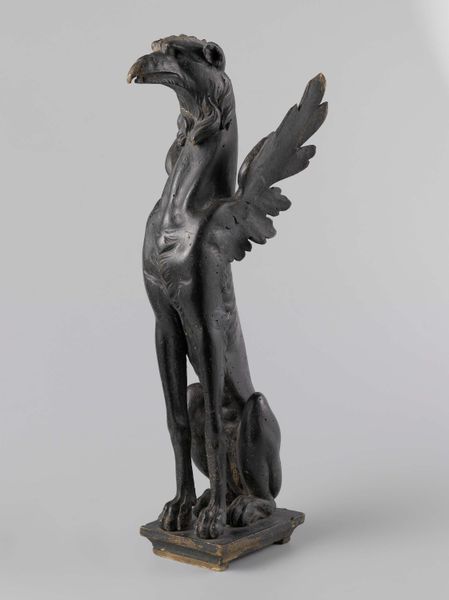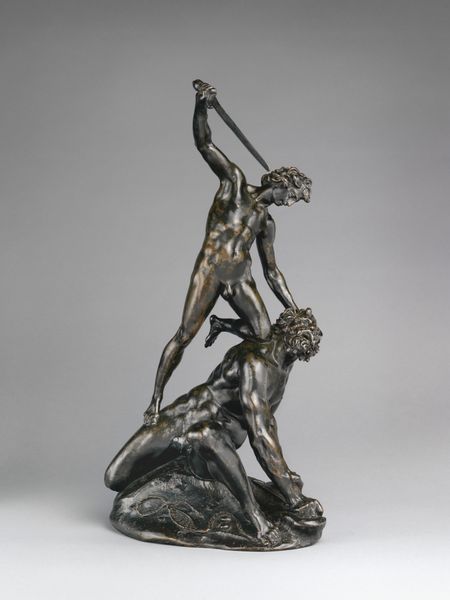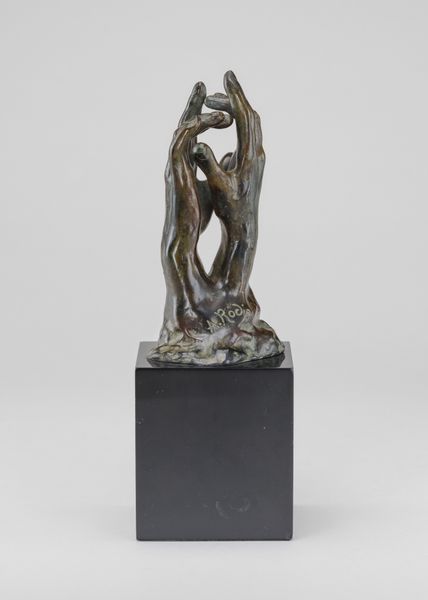
Copyright: Public domain
Curator: Rodin’s "The Call to Arms", dating from 1879, immediately strikes me as a work pulsating with fervent energy. Editor: Its textural quality is what grabs me. The rawness of the bronze, its patination, really draws attention to the sculptor's hand in crafting such a dramatic piece. Curator: Indeed. Let’s consider its allegorical elements: A winged figure exhorts a partially draped male figure bearing a sword, perched atop what seems a base of rough rock or earth. Note Rodin’s skillful rendering of contrapposto, offering not just stability, but also amplifying movement and emotional intensity. Editor: The bronze itself, though... considering the labour involved – the casting process, the finishing – and how this reflects not just Rodin’s vision, but also the collective work involved in such a complex manufacturing. It seems almost defiant of the bourgeois notion of the solitary artist. Curator: An astute observation. Beyond material and production, the statue evokes a strong sense of patriotic zeal. The romantic influence is unmistakable, from the dramatic diagonals to the dynamic figures. Think of it as Rodin's commentary, perhaps, on the spirit of resistance or national identity. Editor: Precisely! And isn’t interesting to consider the foundries themselves—how these places of industrial production actually shaped and gave physical form to Rodin's artistic ideas, often playing a pivotal role in executing his vision? Curator: Well put. To really deconstruct this work, we should consider not only the visible and formal choices, but also contextualize it within Rodin’s broader oeuvre. His emphasis on capturing emotion through sculptural form, disrupting classical conventions… all come into play. Editor: Absolutely, recognizing the broader network—the economic, social, and even the technical forces at play, gives a far richer reading than formal elements alone can achieve. Curator: A broader reading is necessary. Rodin's manipulation of light and shadow upon the rough bronze surface truly adds to the visual dynamism. It compels the eye. Editor: I concur! Reflecting upon our perspectives here only illuminates the complex tapestry of artistic interpretation that artworks present to each viewer. Curator: Indeed. "The Call to Arms" becomes, then, a fascinating nexus where form, materiality, and cultural contexts meet.
Comments
No comments
Be the first to comment and join the conversation on the ultimate creative platform.
